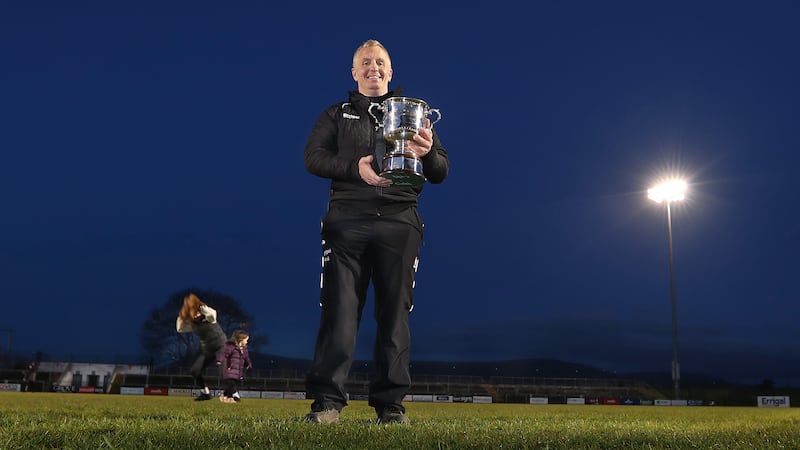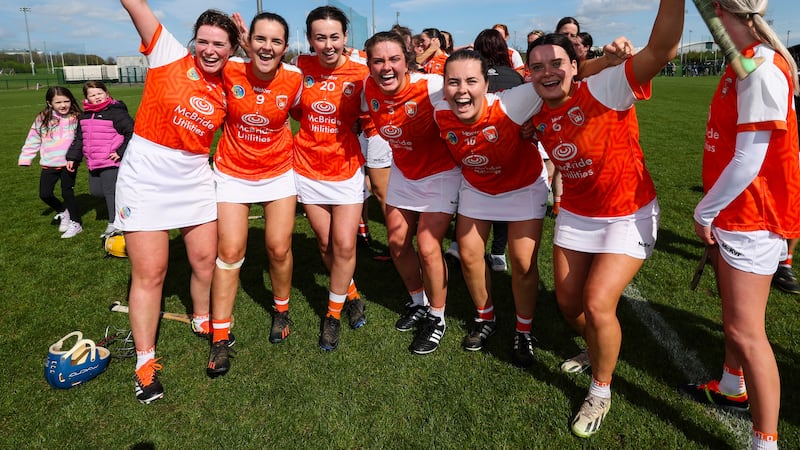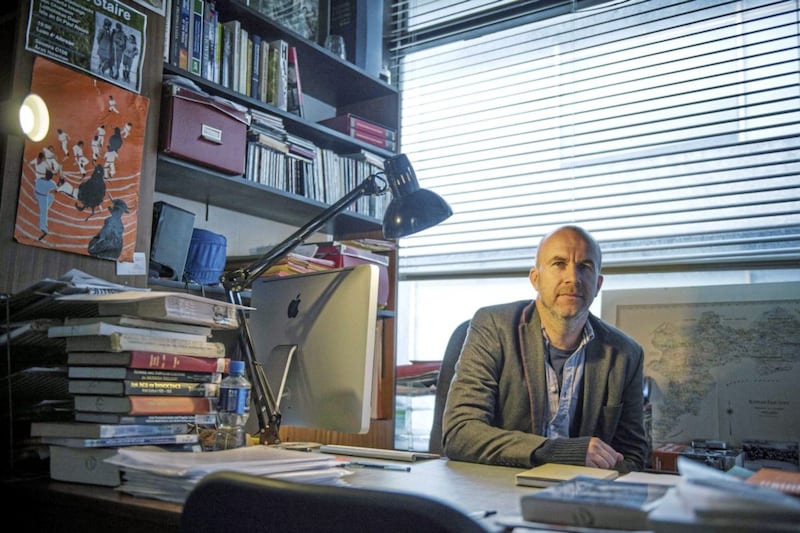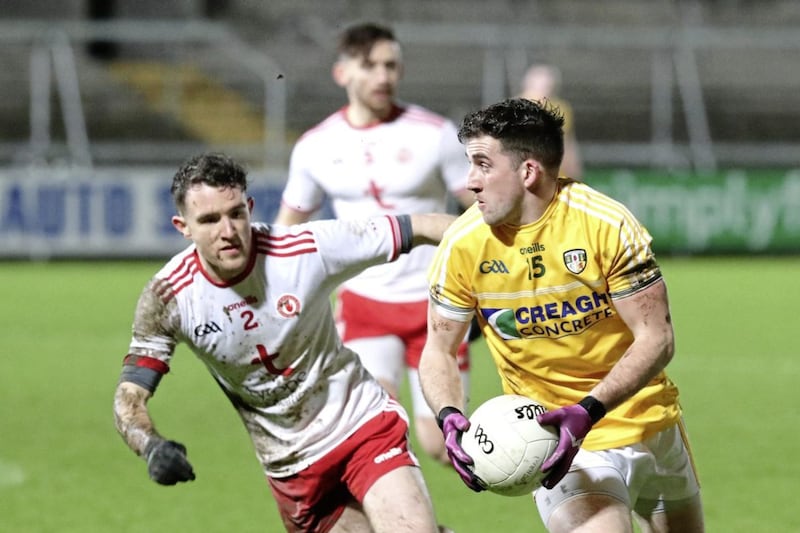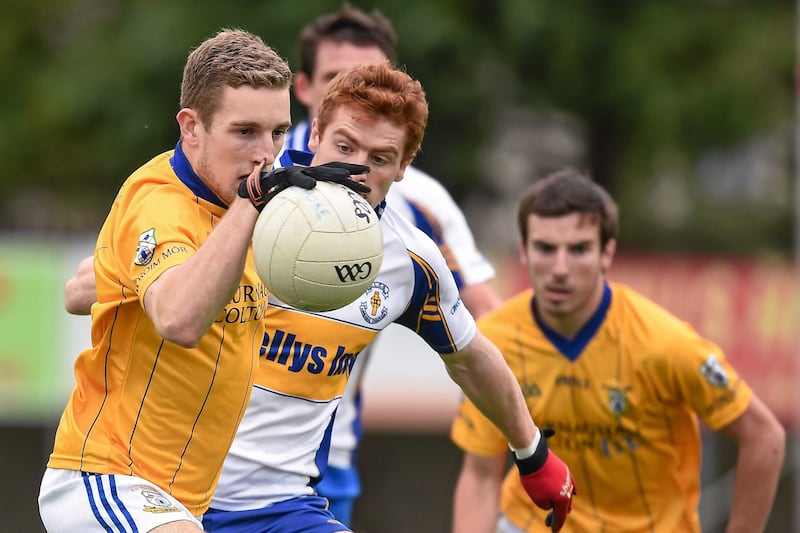FOR a nation so obsessed with its own history and with the GAA, it’s astonishing that so little was known about the early days and years of the Association.
Was. Happily such ignorance has itself been consigned to the past due to the diligence of Paul Rouse, author of ‘The Hurlers’, subtitled ‘The First All-Ireland Championship and the Making of Modern Hurling’.
As he poked about and pulled “at the threads” this was a tale that grew and grew. And grew. Into a quite brilliant book.
His original intention of “a long feature article on the day” of the first All-Ireland Senior Hurling Final, held in Birr, blossomed into a brilliant book about how ‘Tipperary’ came to beat ‘Galway’ on April 1, 1888.
That date – April Fools’ Day – was extremely fitting given the farcical elements involved in getting there, in the many months beforehand as well as for the players travelling to take part.
The GAA wasn’t so much an organisation back then as a ‘disorganisation’, with hurling only strong in certain counties and clear evidence of favouritism in fixture-scheduling and in decisions regarding controversial results.
Same as ever, really.
Beautiful accident
The work took the Tullamore native almost a quarter-century, as he explains: “I started on it in the mid-90s when I was in my mid-20s, when I was working as a reporter for the local paper in Tullamore, the Leinster Express and the Tullamore/ Midland Tribune as well.
“I found this old ‘Midland Tribune’ cutting about the hurling final, purely by chance one day.
“I knew nothing about it, even though I’m from Offaly, I didn’t realise the first final had been played in Birr. I had this idea that I’d write a long feature article on the day itself, do a bit of digging, and it just took off from there…
“It’s one of those beautiful accidents on a personal level, a complete quirk of fate which ended up being to my benefit; it’s given me countless hours of pleasure to pull at the threads of this story and find a way of trying to piece things together.
“I had done a history degree and a Masters in history, I was just interested in it, I didn’t know where I was going to go with it, I didn’t have a plan, I didn’t know what I was going to be doing with my life. It was an accident.
“It grew from being the history of a day, to a history of that Championship, to ‘I’m going to try to tell the story of the birth of modern hurling’. It grew from one thing to the next.
“I tried to tell the history of the time and the people who shaped it; I hope it’s full of the stories of people. People are the engines who drive history. Look now at what sells newspapers and it’s human stories – and I think this is a book full of human stories.”
The most well-known of them was Michael Cusack, the main founder of the GAA, but Rouse’s delving turned up fascinating details about the man himself, in all his argumentative, passionate glory:
“It was surprising to find just how utterly stunning an individual Michael Cusack was, both in his strengths and his weaknesses, in his qualities and his flaws. He’s almost cartoonish, he’s that outrageous.”
The Ulster connections
The book also touches on the Ulster elements in the re-birth of hurling, in an Ireland where ‘Empire games’ such as cricket, rugby union, and soccer were increasingly popular.
Cusack’s connections with Ulster, especially Down are well enough documented – “Cusack had deep connections with Belfast, loved going to Belfast. He taught himself, of course, up in St Colman’s in Newry.” Indeed Cusack married a Down woman, Imelda Woods from Dromore.
The man who wrote the letter that sparked what became the Gaelic Athletic Association – under the pseudonym of ‘Omega’ – was also from the Mourne County, Frank Potterton of Newry, who had gone on to Trinity College in Dublin.
Rouse also notes that “one of the four people there on that Saturday in October 1883 when Cusack went round to the Wellington monument in Phoenix Park to puc a ball around was LC Slevin from Armagh, those connections run through the book.”
Perhaps people who share those surnames can shed more light on those mystery men; Rouse could only find out a limited amount. “You have to make sacrifices – I did follow Potterton a bit but I only got so far; I know he lived in Fairview [Dublin], but Slevin…hopefully for the future.”
Although now a lecturer in history at UCD, specialising in the history of sport, even Rouse was constantly surprised by the nuggets he unearthed during his deep research for this book. “There wasn’t a day that I didn’t find out something where I said ‘I’m really struggling to believe that!”.
“I was surprised to find out that the letters, which were the first push to revive hurling, were published in ‘The Irish Times’, of all papers, which was then a bastion of conservative Unionism and anti-Gaelic in much of how it stood. That was important.
“The fact that Kilkenny was more football than hurling, that was surprising, and more cricket too.
“My favourite story is the day that Kilkenny were due to play Cork in the first All-Ireland hurling quarter-final match down in Dungarvan and I love the story of the train leaving Kilkenny station and picking up people at various stops along the way to such an extent that people had to lie on the roof of the train to go under a bridge. It’s reminiscent of the old images of Asian trains, Indian hill railways, as the steam billows out of the front of the engine – that’s a great story.”
Rouse's research into the shenanigans of IRB involvement in the early years of the GAA reveal astonishing accounts of violence and vindictiveness.
There are still some of those traits in the Association, and debates over the direction in which it should go. Indeed Rouse is as passionate about the present and future of hurling as he is about its past.
Dual players?
Although he was briefly Offaly football manager this year, he loves the caman code too: “I played both of them for my club [Tullamore] but I definitely played way more football than hurling. That’s partly a function of the way our club was when I was a youngster and partly due to the fact that I was better at football than hurling. Most of my friends were on the football team as well.”
Offaly straddles the north-south divide in hurling, although the Faithful County has fallen between the two stools of football and hurling in recent times.
Rouse insists that “the day of the dual player is absolutely dead at inter-county level – and well on the way to being dead at club. Anyone who wants to be a dual player will play at junior level.
“The trends of specialisation and the demands that are being put on club players, let along county players, mean that it is exceptionally hard….
“I come from a club with dual players. We were beaten in the county semi-final by a couple of points by Rhode; we were 5/1 going into the game and we very nearly turned them over, it was a magnificent performance by our team. But half of our team played in the county hurling semi-final six days previously and that affects your preparation.
“Equally, the lads who had played in the county hurling semi-final had played in a county football quarter-final the week before that.
“These are facts, and you’re playing against people who are dedicated to one particular sport or the other.”
He has a balanced opinion on the two codes, despite some paternal brain-washing: “My father’s view is that hurling matches are like pints of Guinness: some may be better than others but there’s no such thing as a bad one. I’m not so sure on that.”
The future of hurling
Indeed, Rouse remains cautious about the health of hurling, despite the drama of this year’s Championship, and the delight at Limerick’s long-awaited lifting of the Liam MacCarthy Cup.
Anybody who thinks that hurling is great now doesn’t understand the history and development of sport. It also means they have a very narrow ambition for the sport of hurling.
“If people are content with a couple of good championships…People will also get tired of the Munster League/Championship format as well. That will be fine but everything moves on, people demand more.
“The real success of this year’s championship wasn’t just the quality of the games that were played, it was that it didn’t end up with Kilkenny and Tipp playing in the Final again.
“For all that there were brilliant matches between Kilkenny and Tipperary, some of the best hurling ever played, by the end of it hurling was crying out for change.”
Change comes slowly, though, at least in hurling. One striking element from the book is that the original strongholds of hurling remain the leading counties today, 135 years on.
Promoting the game
“That’s a real point and a question that the GAA really struggles to answer in any coherent way: if hurling is such a wonderful game, ‘the greatest field sport’ as people in the Gaelic Athletic Association routinely proclaim it is, and those of us who love hurling have no problem with that argument - even football people acknowledge the glories of a great hurling game…
“But if hurling is such a great game, why is it that there so many parts of Ireland where hurling has, at best, a very limited presence?
“And why is it, apart from the sporadic examples of club and county teams from Antrim, that, north of a line between Dublin and Galway, hurling people are not competitive?”
So what can/ should be done?
“It’s very, very simple: it requires money and people going into schools. It also has to be a multi-annual commitment.
“If anybody wants to see what can be done, look at what has happened in large swathes of Dublin over the last 15 years where there has been deep and residual investment in providing, first of all, the implements of play and then the structures of play, for people who wish to play hurling. Look at that: the pathway is there.
“Waterford was not competitive in hurling until the 1930s. Laois won an All-Ireland in 1915 – why? Because in the previous 15 years it had set up a schools league, underage leagues, it had a proper coaching structure.
“The lessons are obvious throughout history: you invest in coaching and equipment and you develop the game from that. But there has to be a deep, concerted, organised plan which is properly resourced in both human and financial terms.”
Overseas trips
The GAA has been pushing the game abroad, but Rouse is sceptical about that approach:
“The talk about showing it on television overseas or having challenge matches overseas as a means of spreading the game….
“If any of those things work, how come there’s not more hurling played in the north?!
“The answer, again, is that the places where there are Gaelic games played at the moment overseas are the ones where they are now putting coaches into the schools, stuff like that.
“You have to remember that if we expect to hugely adhere to our games then that means they have to throw down their own games.
“Just as if we expect people to seriously adhere to hurling, then they’ll have to throw down Gaelic football.
“That’s the logical conclusion and if you don’t accept that then I don’t understand your argument. You’re talking about people starting to play games who don’t play games at all and we know that doesn’t wash.
“I understand the ambitions to spread the game overseas, I understand the desire, you can’t argue against it in a kind of ‘wishing for global peace’ way – but you also have to say, if an organisation has a particular set of resources, how does it intend to prioritise the use of those resources?
“Is it seriously contented that the growing of the games overseas can be done without massive investment? If it is, then show me the plan.
“Let’s be the clear, the Fenway Classic is a great jolly for a load of lads who played county hurling this year to let them go away and enjoy themselves – and there is nothing wrong with that.
“But don’t try to dress it up as something that is going to spread the game. It’s a junket and good luck to the people on the junket – but just call it a junket.
“It’s a bit of craic, a bit of fun. Have a few pints, meet people in Boston, get to see the world – nobody can object to that. But don’t dress it up into something more than it actually is, I don’t get that.”
Rouse is a very vocal critic of SKY’s coverage of the GAA, and in reply to a question on that subject says: “I don’t have a concern, I’d say it is plain wrong.
“Nobody has yet been able to explain to me how an organisation that professes to be working on behalf of the community, in the community, and routinely presents itself as a community organisation, can construct a broadcasting [rights] policy that stands in direct contradiction to that. Nobody has yet answered that question.”
Enough about the present and the future of the game, though.
Buy ‘The Hurlers’ and enjoy the stories of the first All-Ireland SHC, which Rouse concludes “was, ultimately, a triumph because it had happened at all”.
* ‘The Hurlers’ is published by Penguin Random House Ireland, priced E23 (£20).

